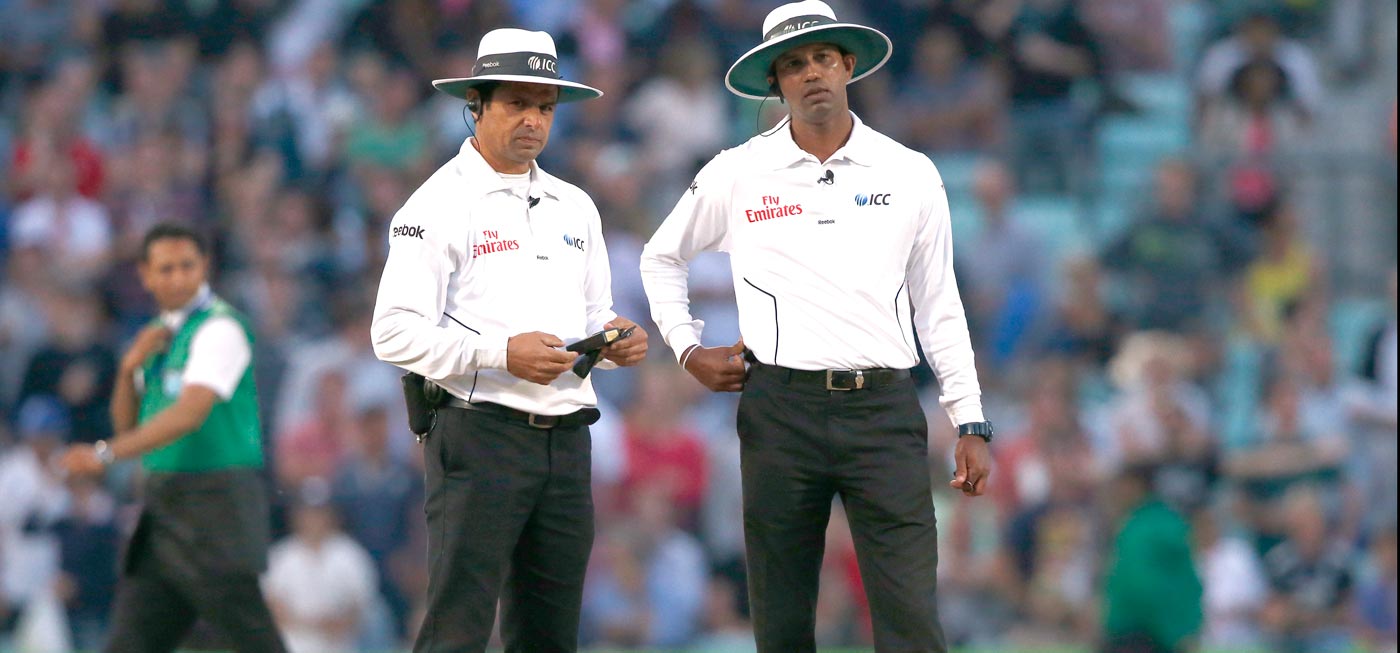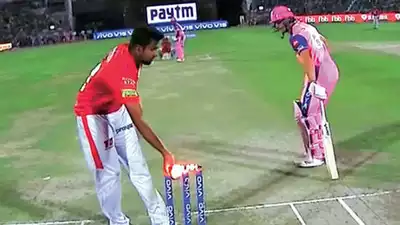2.1 Appointment and Attendance
Before each match, two umpires shall be designated, one for each end, to oversee the game as mandated by the Laws, ensuring absolute impartiality. These umpires must be present at the ground and report to the Ground Executive at least 45 minutes before the scheduled start of play each day.
2.2 Umpire Change
An umpire can only be substituted during a match under exceptional circumstances, typically when they are injured or unwell. In such cases, the replacement umpire will primarily serve as the striker’s end umpire unless both team captains agree to grant the replacement full umpiring responsibilities.
2.3 Consultation with Captains
Before the coin toss, the umpires shall:
2.3.1 Meet with the captains and address:
- The selection of cricket balls to be used during the match
- The determination of hours of play, intervals, and their timings (in one-day matches, the tea interval may be scheduled between innings instead).
- The designated timekeeping device and its backup for the match.
- The boundary definition and considerations for boundaries, including any obstacles within the field of play.
- The use of pitch covers
- Any special playing conditions that may affect the course of the match.
2.4 Examination of Wickets, Creases, and Boundaries
Before the toss and during the match, the umpires shall ensure:
**2.4.1 The pitch wickets are properly positioned (refer to Law 8 – The Wickets). 2.4.2 The creases are correctly marked. 2.4.3 The field of play’s boundary complies with the requirements defined in Laws 19.1, 19.2, and 19.3 (Determining the Boundary, Identifying and Marking the Boundary, and Restoring the Boundary, respectively).
2.5 Match Conduct, Equipment, and Implements
Before the toss and during the match, the umpires shall verify:
**2.5.1 Strict adherence to the Laws governing match conduct. 2.5.2 The conformity of implements used in the match with the following: 2.5.2.1 Law 4 (The Ball). 2.5.2.2 Externally visible requirements of Law 5 (The Bat) and Appendix B. 2.5.2.3 Either Laws 8.2 and 8.3 (Size of Stumps and The Bails) or, when applicable, Law 8.4 (Junior Cricket). 2.5.3 No players use unauthorized equipment (see Appendix A.2, particularly the interpretation of the term “protective helmet“). 2.5.4 Wicket-keeper’s gloves comply with the requirements specified in Law 27.2 (Gloves).
2.6 Fair and Unfair Play
The umpires are the sole arbiters of fair and unfair play.
2.7 Fitness for Play
2.7.1 The decision regarding whether ground conditions, weather, light, or exceptional circumstances make play dangerous or unreasonable is solely the umpires’ responsibility. Conditions should not be deemed dangerous or unreasonable merely due to less-than-ideal conditions. Wet grass and a wet ball, for instance, do not automatically render the ground conditions unreasonable or unsafe.
2.7.2 Conditions will be considered dangerous when there is an actual and foreseeable risk to players’ or umpires’ safety.
2.7.3 Conditions will be considered unreasonable when, although not posing a safety risk, it would be imprudent to continue play.
2.7.4 If the umpires determine that the ground is too wet or slippery for bowlers, fielders, or batters to safely and reasonably perform their roles, they shall deem these conditions so severe that they make play dangerous and unreasonable.
2.8 Suspension of Play in Dangerous or Unreasonable Circumstances
2.8.1 References to the “ground” in this context include the pitch.
2.8.2 The umpires shall promptly suspend play or prevent it from starting or resuming if either umpire deems the ground conditions, weather, light, or other circumstances to be either dangerous or unreasonable.
2.8.3 When play is suspended, the umpires are responsible for continually monitoring conditions. They must make inspections as often as necessary, without a player or official accompaniment. Once the umpires jointly agree that conditions are no longer dangerous or unreasonable, they shall instruct the players to resume play.
2.9 Umpires’ Position
The umpires shall position themselves to have the best view of actions requiring their decision. The bowler’s end umpire shall ensure not to obstruct the bowler’s run-up or the striker’s view. The striker’s end umpire may choose to stand on the off side of the pitch instead of the on side, provided they notify the fielding team captain, the striker, and the other umpire.
2.10 Umpires Changing Ends
The umpires shall swap ends after each team has completed one innings.
2.11 Disagreements and Disputes
In cases of disagreement or disputes, the final decision shall be made jointly by the umpires.
2.12 Umpire’s Decision
An umpire may revise a decision, provided it is done promptly and does not contradict Law 20.6 (Dead Ball Not to Be Revoked). Except for this, once an umpire makes a decision, it is considered final.
2.13 Signals
2.13.1 Umpires shall employ the following code of signals:
2.13.1.1 Signals during live play include:
- Signaling a dead ball by crossing and re-crossing the wrists below the waist.
- Indicating a no-ball by extending one arm horizontally.
- Signaling a batsman’s dismissal by raising an index finger above the head (if not out, the umpire shall call “Not Out”).
- Declaring a wide ball by extending both arms horizontally.
2.13.1.3 The following signals, to be conveyed only to the scorers when the ball is dead, include:
- Signaling a boundary 4 by waving an arm from side to side and finishing with the arm across the chest.
- Signaling a boundary 6 by raising both arms above the head.
- Declaring a bye by raising an open hand above the head.
- Notifying the commencement of the last hour by pointing to




13 thoughts on “Law 2 – The Umpires”